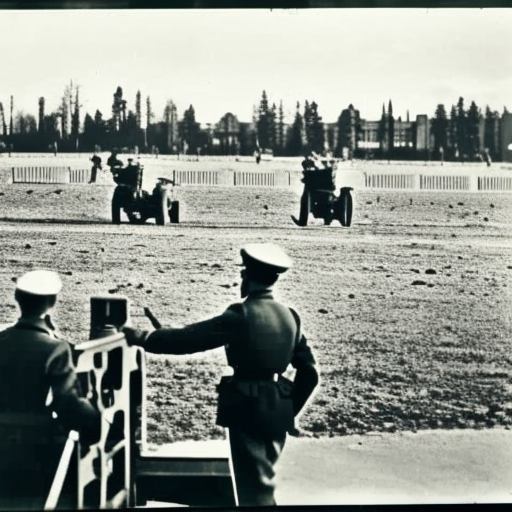Summary:
The German occupation of Latvia during World War II lasted from 1941 to 1945. It was a period of significant upheaval and suffering for the Latvian people. The occupation began when Nazi Germany invaded Latvia as part of their larger campaign to conquer the Soviet Union. The Germans quickly established control over the country, implementing a brutal regime that resulted in widespread repression, forced labor, and the extermination of thousands of Latvian Jews. Despite some initial support for the Germans, many Latvians eventually turned against the occupation and joined resistance movements to fight for their independence.
The German Invasion and Occupation:
On June 22, 1941, German forces launched Operation Barbarossa, their invasion of the Soviet Union. As part of this campaign, Latvia was occupied by the German army. The Latvian government, which had been established after Latvia gained independence in 1918, was dissolved, and the country was placed under German military administration. The Germans quickly established control over all aspects of Latvian society, including the economy, education, and media.
Repression and Forced Labor:
Under German occupation, Latvia experienced widespread repression. The Nazis implemented a policy of racial discrimination, targeting Jews, Romani people, and other minority groups for persecution and extermination. Thousands of Latvian Jews were rounded up and killed in mass shootings or sent to concentration camps. The Germans also established forced labor camps where Latvians were subjected to harsh conditions and forced to work for the German war effort.
Resistance Movements:
Despite the initial support for the Germans by some segments of the Latvian population, many Latvians eventually turned against the occupation. Resistance movements, such as the Latvian Partisans, were formed to fight for independence and to undermine German control. These resistance fighters carried out acts of sabotage, gathered intelligence, and engaged in guerrilla warfare against the German forces. The resistance movements played a crucial role in keeping the spirit of Latvian nationalism alive during the occupation.
The End of the Occupation:
As World War II neared its end, the Soviet Union began to push the German forces out of Latvia. In 1944, the Red Army launched a major offensive, and by the end of the year, they had liberated most of Latvia from German control. However, the end of the German occupation did not bring immediate freedom for Latvia. Instead, the country fell under Soviet occupation, as the Soviet Union sought to reestablish control over the Baltic states.
Legacy:
The German occupation of Latvia during World War II left a lasting impact on the country. The loss of life, destruction of infrastructure, and repression experienced during this period had a profound effect on the Latvian people. The occupation also deepened divisions within Latvian society, as some Latvians collaborated with the Germans while others fought against the occupation. The memory of the occupation and the resistance movements that emerged during this time continue to shape Latvian national identity and the country’s relationship with Germany and Russia.












